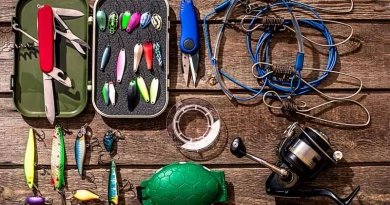
How do I perform CPR in a survival scenario?
Breathing Life: Performing CPR in a Survival Scenario
Under the relentless sun, with the wilderness sprawling endlessly before me, a companion suddenly collapsed. As his breath stilled and pulse faded, the stark reality hit me: I was his lifeline. It was in this moment, far from any trail that sees regular footfall, that I faced the urgent question, “How do I perform CPR in a survival scenario?”
Understanding the Gravity of the Situation
Performing CPR (Cardiopulmonary Resuscitation) in a survival scenario is profoundly different from doing so in an urban setting. The key challenges include isolation, lack of immediate professional medical support, and, typically, a dearth of resources. Every second counts, and the effectiveness of your actions can mean the difference between life and death. Recognizing when CPR is needed involves quick assessment of responsiveness and breathing; if a person is unresponsive and not breathing normally, CPR is crucial.
Navigating CPR in a Survival Setting: A Detailed Guide
Performing Cardiopulmonary Resuscitation (CPR) in the wild presents unique challenges compared to an urban environment. The isolation, the absence of immediate medical support, and limited resources intensify the urgency and complexity of the situation. Recognizing when CPR is necessary involves swift assessment: if a person is unresponsive and not breathing normally, immediate action is required. The effectiveness of CPR in these critical moments can drastically influence survival outcomes.
Crucial Decisions and Steps
In the solitude of nature, the decision to commence CPR is often fraught with pressure. Without the immediate guidance of medical professionals, the responsibility falls entirely on the individual present—usually a lay rescuer who may only have basic training. This decision, made under the stress of an emergency, marks the beginning of a potentially life-saving effort.
The Best Approach to Survival CPR
Ensure Safety: The first priority before initiating CPR is to ensure the safety of both the rescuer and the victim. This includes moving the person away from any immediate dangers, such as unstable terrain, water, or fire. It’s crucial that the rescuer also position themselves safely to avoid becoming a casualty.
Call for Help: At the earliest opportunity, send out distress signals or use communication devices to alert others to your location and the emergency at hand. This could involve using a whistle, firing a flare, or, if signal is available, calling emergency services via a mobile device. Even as you initiate CPR, efforts to summon additional help must continue, as they are crucial for eventual support.
Position the Person: Proper positioning of the victim is critical for effective CPR. Lay the person flat on their back on a firm, flat surface, which is essential for proper chest compressions. Remove any obstructions from around the area to facilitate easier movement and access to the victim.
Perform Chest Compressions: Start by placing the heel of one hand in the center of the victim’s chest, right between the nipples, and put your other hand on top, interlocking your fingers. Position your shoulders directly above your hands and keep your arms straight to help apply forceful compressions. You should compress the chest at least two inches deep, following a rhythm of 100 to 120 compressions per minute—timing that can be matched to the tempo of a fast-paced song like “Stayin’ Alive” by the Bee Gees.
Airway and Breathing: After every 30 compressions, perform two rescue breaths—if you are trained and feel capable of doing so safely. To do this, tilt the victim’s head back slightly to open the airway, pinch the nose shut, and create a complete seal over their mouth with your mouth. Blow into the mouth to make the chest visibly rise, each breath lasting about one second.
Continue Until Help Arrives: Persist with the cycles of 30 compressions and two breaths, without interruption, until professional help arrives or you are physically unable to continue. If you are with others, take turns performing CPR to avoid exhaustion.
Performing CPR in a survival scenario is a profound act of courage and determination. It requires not only physical capability but also the mental readiness to take immediate and effective action under pressure. The key lies in preparation, practice, and presence of mind—qualities that can turn a dire emergency into a story of survival. By understanding and implementing these steps, even in the most remote settings, you can make a critical difference, potentially saving a life when every second counts.
Essential Tools and Resources
- CPR Face Shield or Mask: If available, this can help make rescue breaths more effective and hygienic.
- A Whistle or Signal Device: is useful for attracting the attention of passersby or a search party.
- First Aid Kit: Should contain gloves and a basic CPR mask, if possible.
The Echoes of Urgency
As night fell and the first hints of cool air brushed against the valley, my hands, steady from the rigor of continuous compressions, finally paused as I heard distant voices calling out. Because of the distress signal I was able to send, help had already arrived. Performing CPR in a survival scenario is not just a physical act but a profound moral commitment to fight against the fading light of life. It is about doing all that one can, with whatever one has, wherever one might be. In the wilderness, away from the immediate clutch of civilization, these lessons are not just about survival—they are about humanity.






